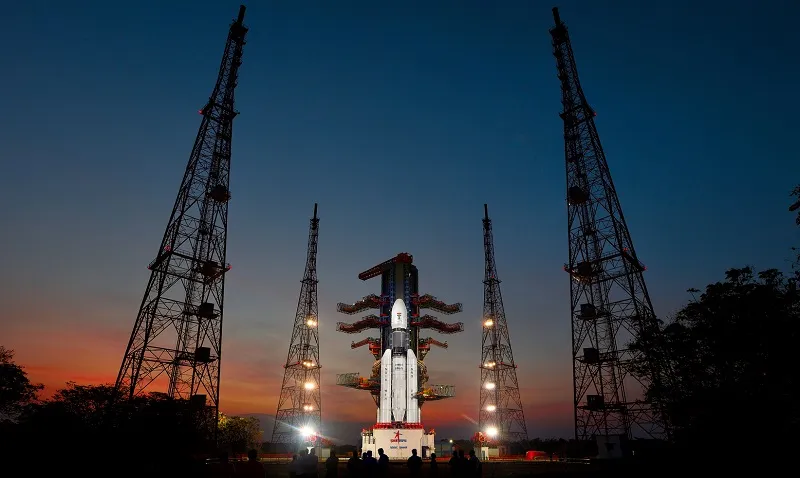India's heaviest rocket with GSAT-19 all set for maiden flight
India's heaviest rocket—Geosynchronous Satellite Launch Vehicle-Mark III (GSLV-Mk III)—has geared up for its maiden flight into space along with a communications satellite this evening.

Standing tall at the Satish Dhawan Space Centre in Sriharikota in Andhra Pradesh, the rocket, expected to be launched at 5:28 pm, weighs 640 tonnes and is 43.43 metres tall. This is the second launch pad at India's rocket port and will carry a 3,136-kg GSAT-19 communications satellite—the heaviest to be lifted by an Indian rocket till date.
The rocket is targeting an altitude of around 179 km above Earth after just over 16 minutes into the flight. On June 2, the Mission Readiness Review Committee and Launch Authorisation Board had cleared the countdown for GSLV Mk-III D1/GSAT-19 mission. The rocket's main and bigger cryogenic engine has been developed by space scientists, said an IANS report. The mission's success will enable India to launch four-tonne satellites on its own rocket instead of paying huge amounts of money to foreign space agencies to execute the operation.
According to ISRO, GSAT-19, with a lifespan of 10 years, is a multi-beam satellite that carries Ka and Ku band forward and return link transponders and geostationary radiation spectrometer. K. Sivan, Director, Vikram Sarabhai Space Centre, told IANS,
The rocket's design carrying capacity is four tonnes. The payload will be gradually increased in future flights of the GSLV Mk-III.
ISRO had flown a similar rocket without the cryogenic engine but with a 3.7-tonne payload in 2014 mainly to test its aerodynamics and structural stability while in flight. S. Somanath, Director, Liquid Propulsion Systems Centre, told IANS that the inputs of the 2014 mission enabled the ISRO to reduce the rocket load by around 20 percent. Interestingly, GSLV-Mk, III at around 43 metres, is slightly shorter than Mk-II version that is around 49 metres tall.
The new rocket may be slightly short but has more punch power, an ISRO official told IANS.
India presently has two rockets—the Polar Satellite Launch Vehicle and GSLV-Mk II—with a lift-off mass of 415 tonnes and a carrying capacity of 2.5 tonnes.
Do you have an interesting story to share? Please write to us at tci@yourstory.com. To stay updated with more positive news, please connect with us on Facebook and Twitter.







